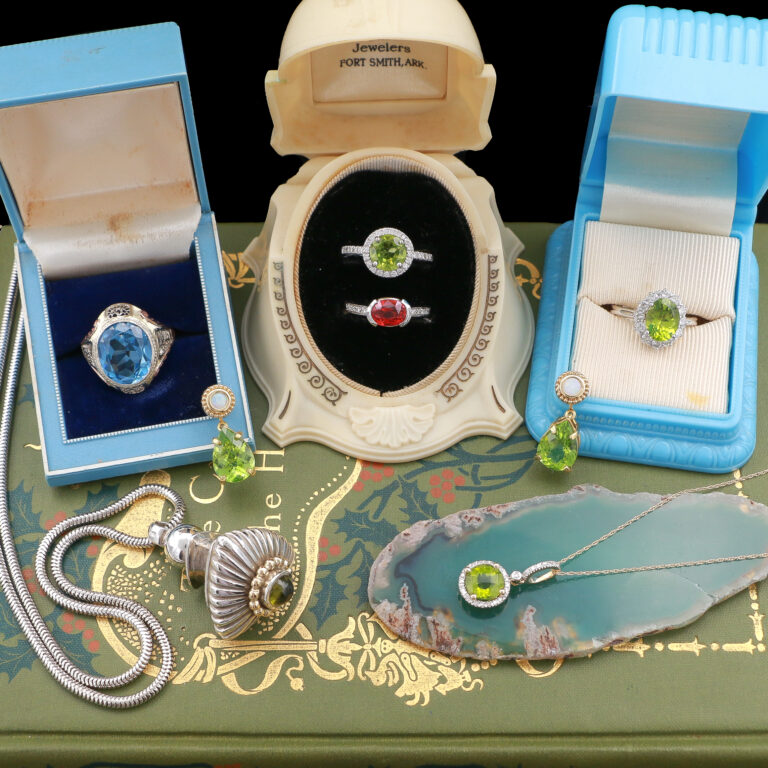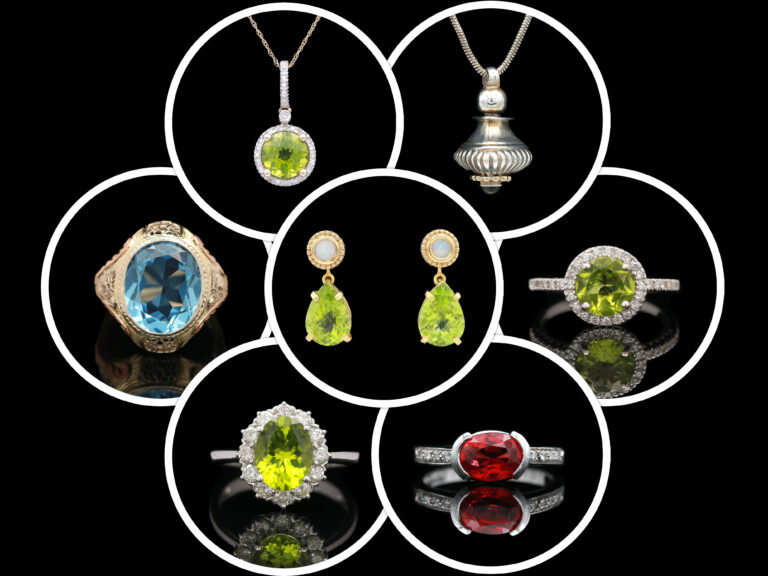Glorious in Green: Exploring The Richness of August Birthstones

It’s hard to believe, but summer will be drawing to a close before we know it—bringing with it cooler temperatures, falling leaves and cloudy skies. It’s only fitting that as we appreciate the last few weeks of lush green leaves and blazing sunshine, we take a moment to admire August’s equally vibrant birthstone: The peridot!
A radiant green gemstone, peridot has been prized for centuries for its vibrant color and purported metaphysical properties. The stone has historically been believed to promote emotional balance, reduce stress and boost feelings of happiness (and attract prosperity and good fortune). While these claims remained unverified, we can all agree that the peridot is a beautiful stone that just looks like
summer—like a juicy pear or a field of green grass. And like all other gems, the peridot has a rich
background and history. Here are a few reasons to love this “stone of the sun.”
Stone of the Sun: Ancient Egyptians worshipped this stone, believing they fell from the sky, which is when peridots were referred to as the “gems of the sun.” Bonus fact: The peridot is actually the national gemstone of Egypt!
50 Shades of Green: The peridot is always green in color, but can vary in shade from a electric yellow- green to a deeper olive; the intensity and tint of an individual stone depends on the amount of iron in the crystal structure. The most treasured shade of peridot is a pure grass green.
Mistaken Identity: The peridot has often been confused for other gems (like topaz and emerald) over the year. Some historians believe that Cleopatra’s famous emerald collection may have largely been comprised of peridot, and The Shrine of the Three Holy Kings in Germany’s Cologne Cathedral is decorated with 200 carats of gems that were once believed to be emeralds but are, in fact, peridot.
Seeing double: Peridot has extremely high double refraction, which means that if you look closely through the gem, you can see two of each pavilion facet (a characteristic it shares with sapphires and tourmalines). This is one way that gemologists can easily identify a peridot.
Star Stuff: In 2005, peridot was found in comet dust brought back from the Stardust robotic space probe—and peridots are often found in meteorites.
Ready to add some green vibes to your jewelry collection? Shop our available peridot jewelry online—or contact us to learn about creating a custom peridot piece just for you.




